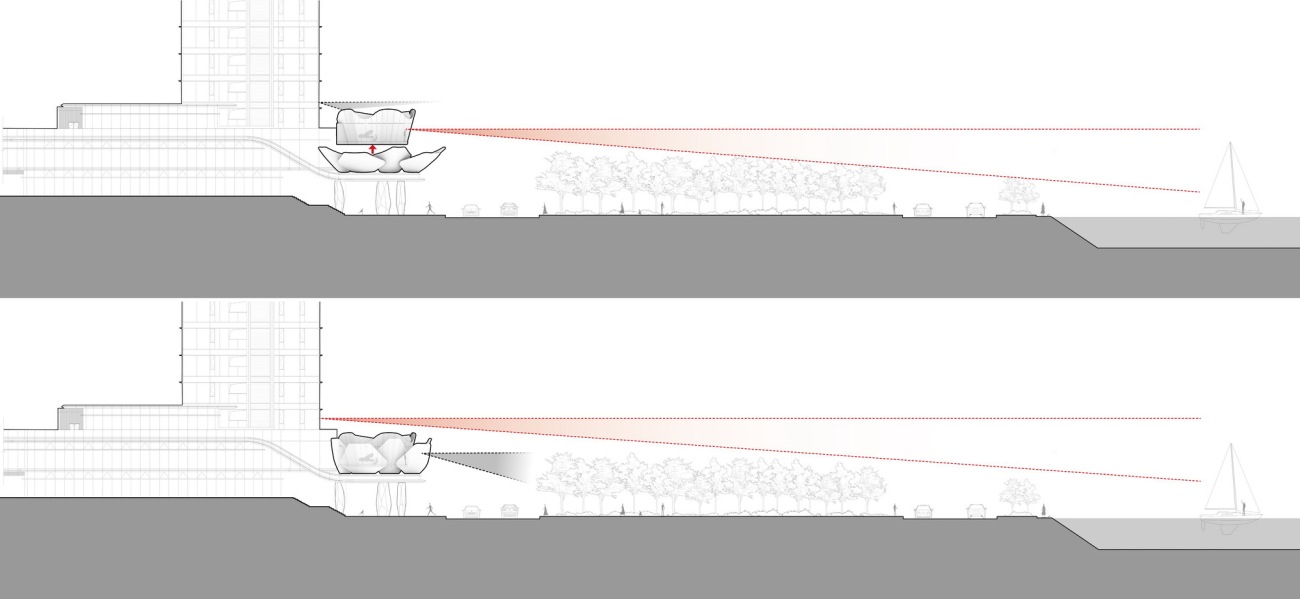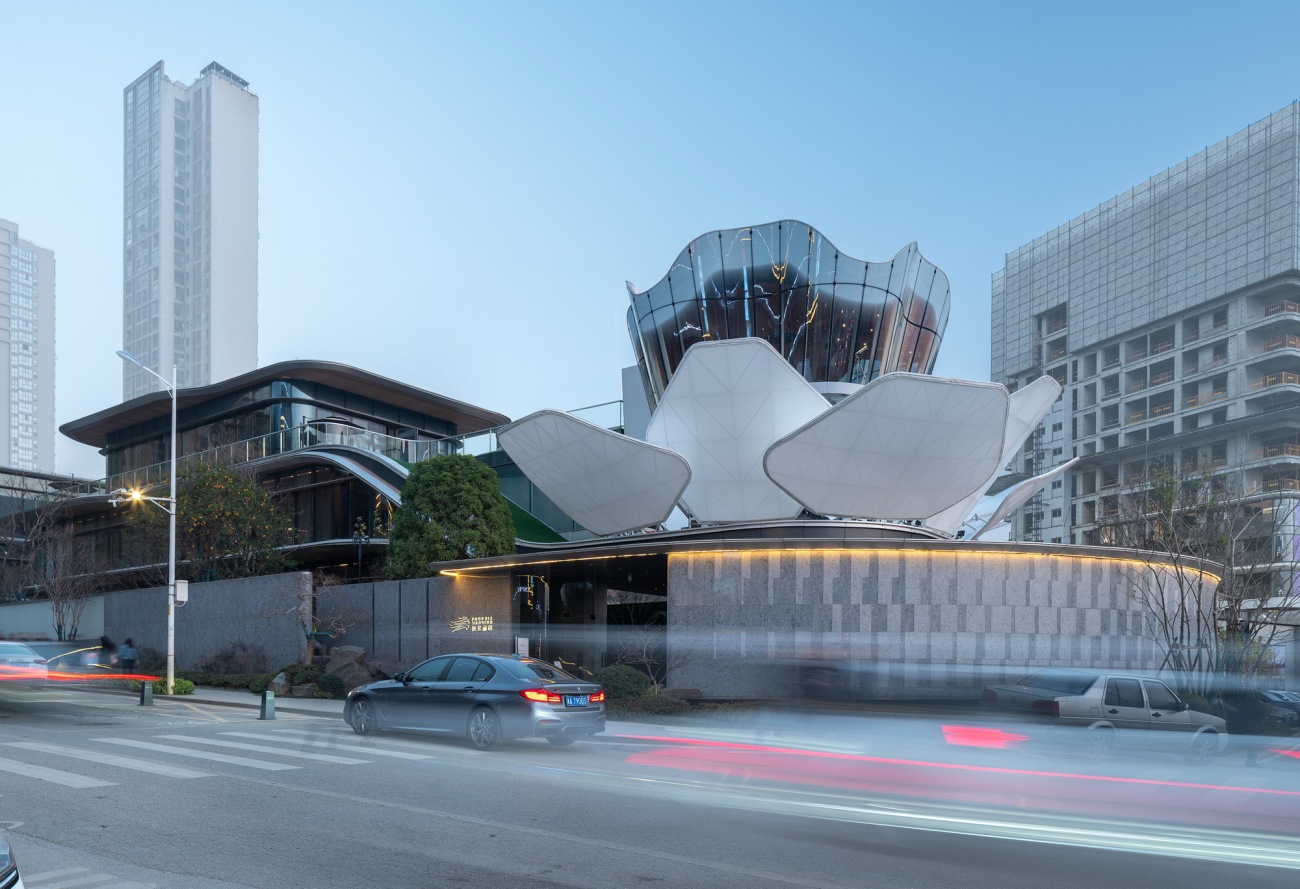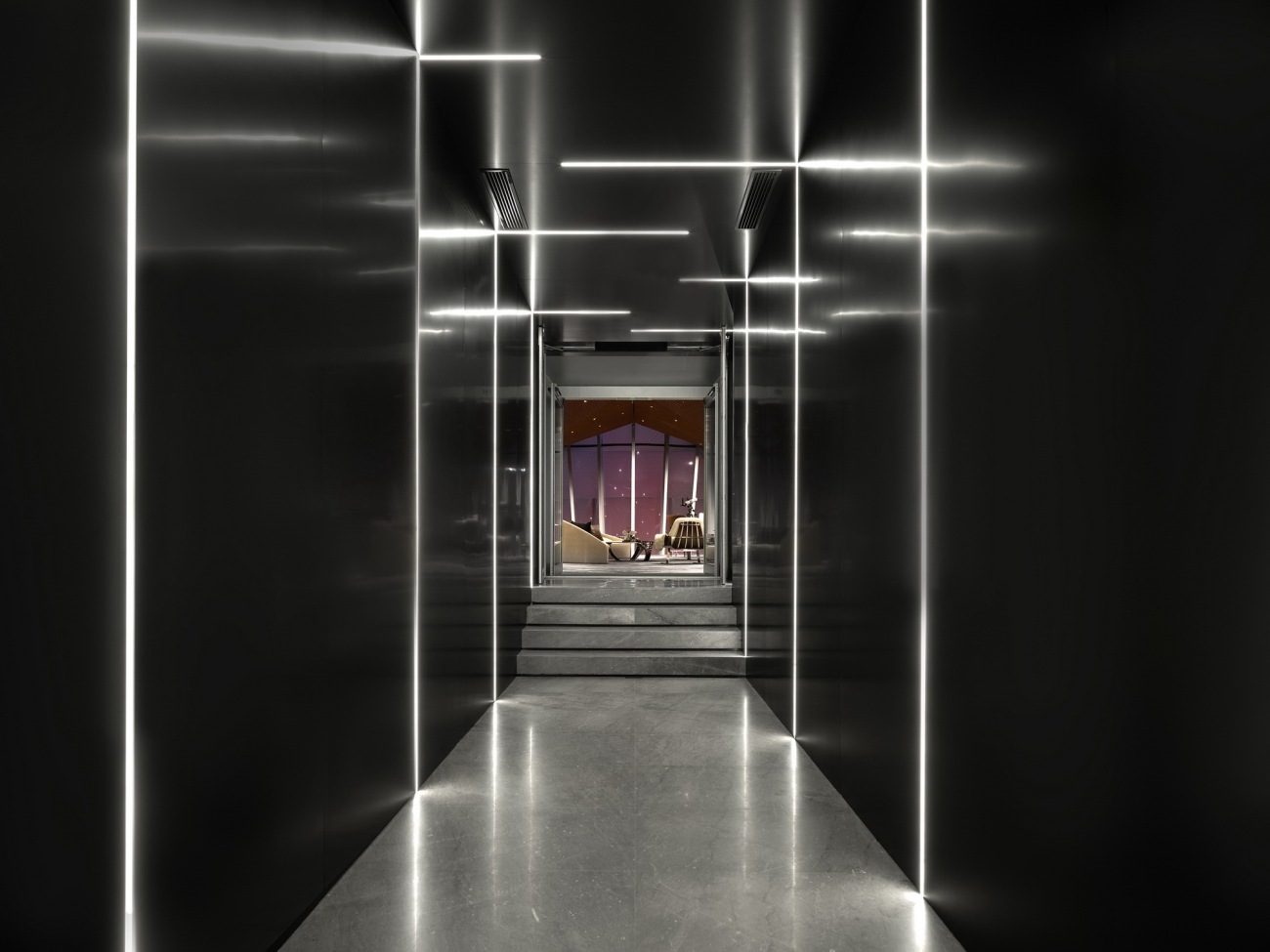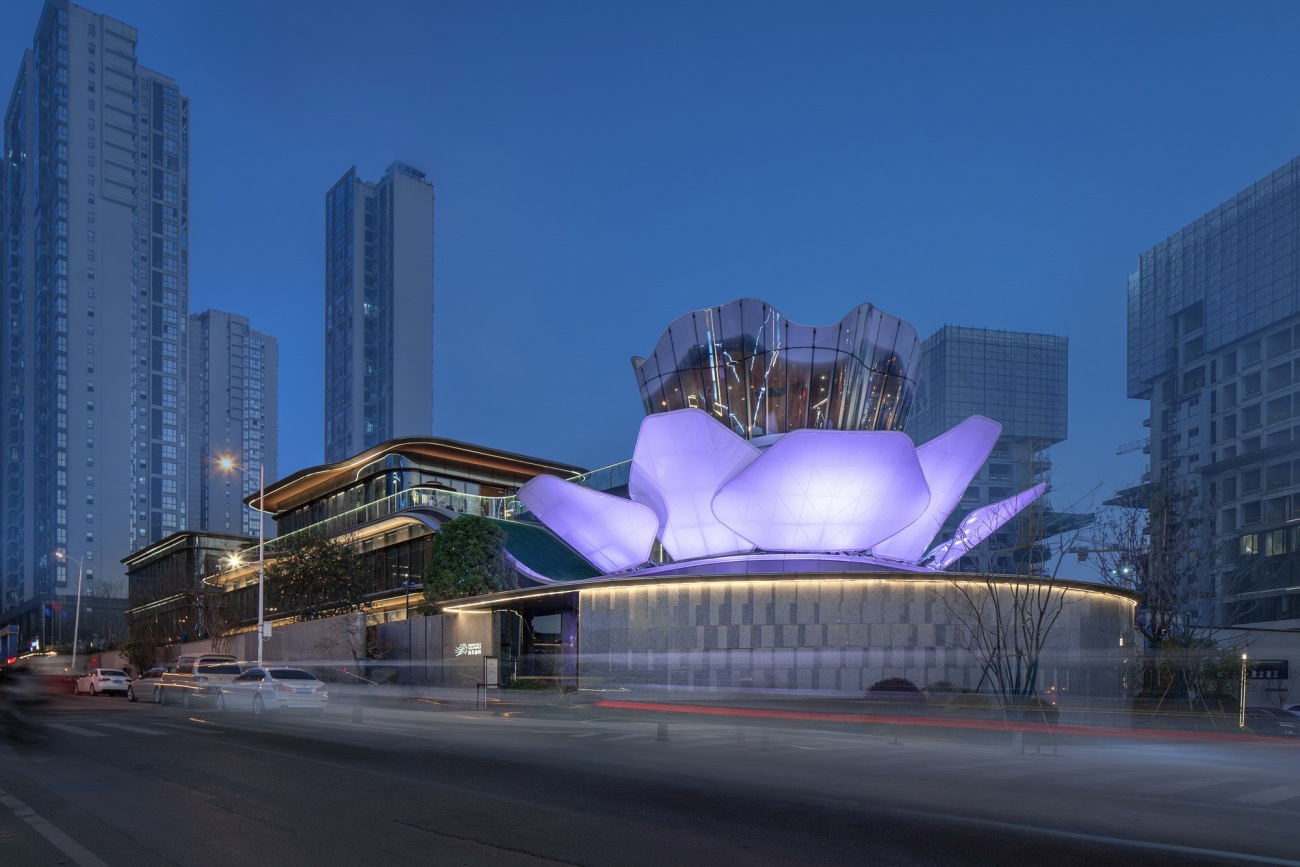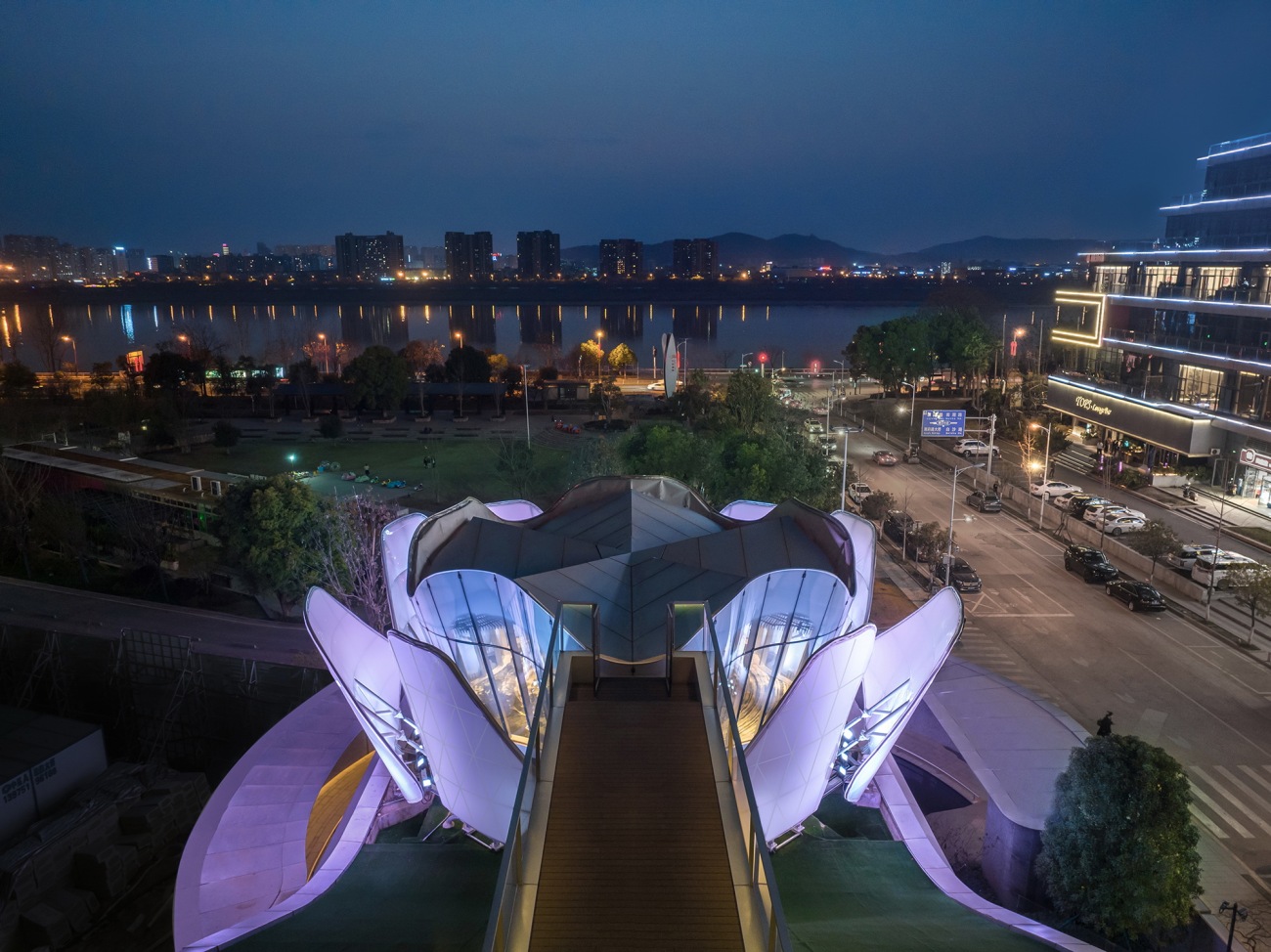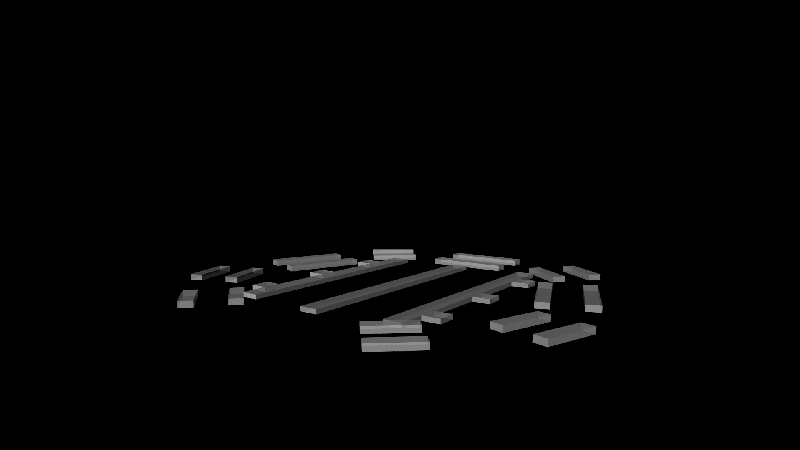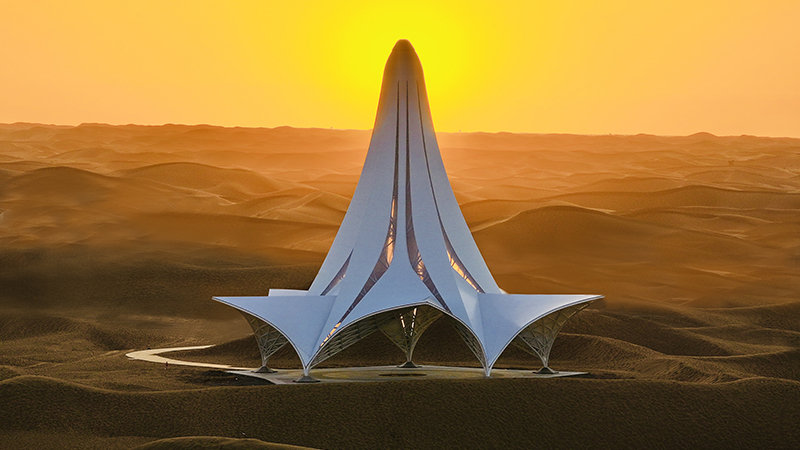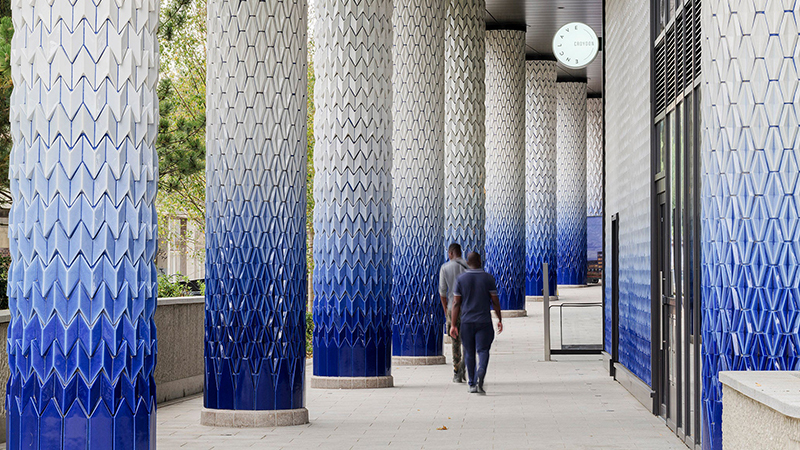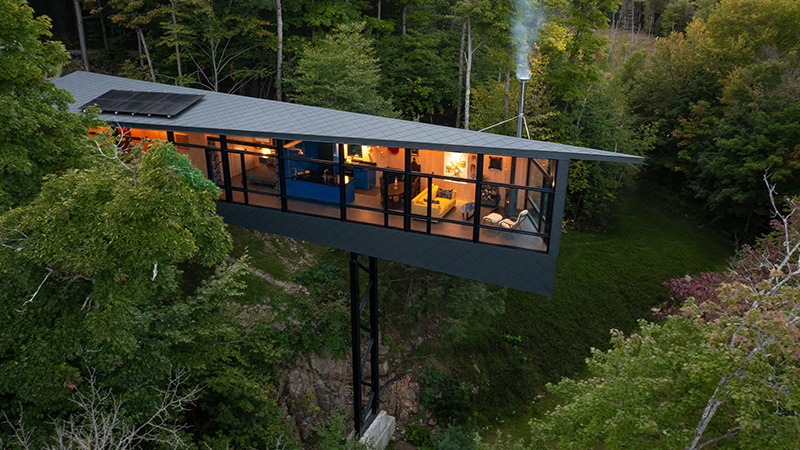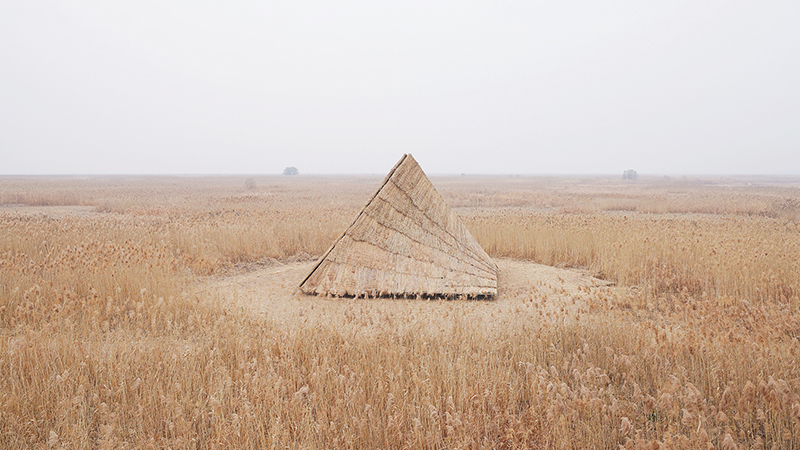| 公司: | line+建筑事务所 | 类型: | 建筑 |
|---|---|---|---|
| 地区: | 中国 | 标签: | 艺术装置 |
“新技术正在不断打破传统建筑的边界,推动建筑生产的变革,最终也将形成新的空间共识——未来的建筑不一定是‘凝固’的音乐,也可以是活动的场景。”
——朱培栋
"New technologies are constantly breaking the boundaries of traditional architecture, driving a revolution in construction. Ultimately, this will establish a new spatial consensus: the architecture of the future may not be ' solidified' music, but rather dynamic scenes."
— Zhu Peidong
line+建筑事务所联合创始人、主持建筑师朱培栋率领团队,携手大界智造,研发并落地国内首个整体可动的动态建筑——长沙“湘江之眼”。该项目以多学科整合、适应性动态变化的尝试,探索了新技术对建筑边界的拓展,也为未来的多元空间使用场景提供了新的可能。
Zhu Peidong, Co-Founder and Chief Architect of line+ studio, together with the team, collaborated with RoboticPlus.AI to research and develop China's first overall dynamic architecture—Lotus by the Xiangjiang River in Changsha. This project, through interdisciplinary integration and adaptive dynamic changes, explores the expansion of architectural boundaries with new technologies and provides new possibilities for diverse future spatial usage scenarios.
01 响应场地条件,探索技术边界
——空间生产方式的新尝试
01. Respond to Site Conditions, Explore Technological Boundaries: A New Attempt in Spatial Production Methods
“湘江之眼”位于长沙湘江畔,作为城市会客厅,兼具城市观景和区域地标的双重属性。
The project is located on the banks of the Xiang River in Changsha, serving as the city's living room, with dual attributes of urban viewing and regional landmark.
△ 区位图
△ Location
由于场地受到沿江岸植被遮挡等限制,需达到足够高度以满足观景和地标两大诉求。但若一味抬高,也存在遮挡周围建筑视线,损害江景社区商业价值的问题。另一方面,内部空间需适应业主对不同场合下的场景切换,对私密性与开放性有多变的特定要求。一系列看似相互矛盾的限定条件,在梳理之后的破题切口,均指向了动态可变的场景诉求。
Due to constraints such as vegetation along the riverbank obscuring the site, it's necessary to achieve sufficient height to fulfill both the requirements of scenic viewing and landmark status. However, simply elevating the structure might block sightlines of surrounding buildings, potentially compromising the commercial value of the riverside community. On the other hand, the interior space needs to adapt to the user's requirement for scene switching on different occasions, with varying specific demands for privacy and openness.
△ 视线分析
△ Sightline Analysis
随着时代更迭,空间用途的不确定性有增无减。在“环境-需求-空间-技术”的单向路径被不断突破的当下,动态建筑有机会成为某种突破口。在本项目中,我们试图针对不同的活动或事件所需要的不同的空间状态进行动态回应,从而构成“人-活动/事件-建筑-环境”的交互结构。设计在提炼了项目一系列的内外诉求后,以空间的标高动态调整和表皮的透明性/私密性变化为目标,通过主体空间升降、外表皮开合为切入的应对手段,灵活可变地应对周边环境、空间需求,创造建筑结构、景观界面、空间体验的多维度融合。
As time progresses, the uncertainty of spatial usage increases. The current context of "environment-demand-space-technology" is constantly being disrupted, and the dynamic architecture has the new opportunity. In this project, we aim to dynamically respond to the different spatial states required for various activities or events, thereby forming an interactive structure of "people-activities/events-architecture-environment". After refining the project's series of internal and external demands, the design targets dynamic adjustments in spatial elevation and changes in transparency/privacy of the envelope. Through means such as the vertical movement of the main space and the opening/closing of the outer skin, the design flexibly and variably responds to the surrounding environment and spatial requirements, creating a multidimensional integration of architectural structure, landscape interface, and spatial experience.
近年来,新技术在诸多行业均引发了变革性进展,但在建筑领域仍少有突破,部分已有的尝试仍局限于建筑幕墙外表皮的局部可变或开启,抑或是专注于室内局部空间墙体或设施的延展与变化。然而我们相信,伴随技术的革新与设计的探索,未来的建筑将不再仅仅是静态的展示,而是能够成为主动响应环境变化、满足人类多样化需求的动态有机空间。
In recent years, new technologies have triggered revolutionary advancements in many industries, yet there have been relatively few breakthroughs in the field of architecture. However, we believe that with the innovation of technology and the exploration of design, future architecture will no longer be merely static displays but dynamic organic spaces capable of actively responding to environmental changes and meeting diverse human needs.
02 绽放姿态
——动态可变的空间形式
02. Unfolding Posture: Dynamic and Variable Spatial Forms
△ 此动态效果为加速模式,单次升/降时间约为35秒
△ This dynamic effect operates in acceleration mode, with a single ascent/descent cycle taking approximately 35 seconds.
建筑的整体概念,即通过主体空间的升降分别对应观景/会谈两种活动和展示/隐匿两种建筑形态。在单体层面,它是集成型的可响应系统,通过工业装置的设计思路,我们首先确认了建筑整体将由主体空间和可动机械装置构成,并根据垂直方向上位移来改变主体空间与东侧建筑不同楼层的连接关系,完成两种流线的切换。
The overall concept of the building involves the elevation of the main space, corresponding to two types of activities: viewing and meetings, and two types of space forms: presentation and concealment. At the individual level, it is an integrated responsive system. By adopting an industrial design approach, we first determined that the building would consist of the main space and movable mechanical devices. We then utilized vertical displacement to alter the connection between the main space and different floors of the east-side building, facilitating the transition between the two circulations.
△ 从闭合到绽放升起的状态
△ From Closed to Unfolding Ascension State
△ 剖面
△ Section
△ 观江隧道:闭合状态时的出入口
△ River Viewing Tunnel: Entrance in Closed State
△ 闭合状态时的屋顶连廊
△ Roof Corridor: Entrance in Closed State
△ 屋顶连廊:绽放升起状态时的出入口
△ Roof Corridor: Entrance in Unfolding Ascension State
在“开放展示”与“收拢闭合”两个动态指令下——观光厅从廊道向上抬升至屋面层,可开合表皮向外展开,室内形成直面湘江的通透观景视野;反之,可开合表皮随观光厅的下降而收拢形成私密空间。整体形如花朵绽放的动态过程,“湘江之眼”的空间形式也由此初具雏形。
Under the dynamic instruction of open display, the observation hall ascends from the corridor to the rooftop level, with the deployable skin unfolding outward. This creates a transparent viewing perspective facing the Xiangjiang River. Conversely, when it comes to closed folding, the observation hall descends, and the deployable skin contracts to form a private space. The overall process resembles the dynamic unfolding of a flower, shaping the spatial form of the project.
△ 动态展开示意图
△ Dynamic Unfolding Illustration
△从闭合到绽放升起的室内状态
△ Interior State from Closed to Unfolding Ascension
△ 闭合状态
△ Closed State
△ 绽放升起状态
△ Unfolding Ascension State
在形态深化阶段,我们希望在模块化设计与标准化组件的建筑装置化路径中寻求具有普遍辨识度的形态意象,以此加强与城市公众的共鸣与互动。可开合外表皮在可操作范围内划分为九块,并根据“花瓣”重合度、开合角度计算优化得出外层四片(7m*5m)+内层五片(6m*6m)的组合方式,并修饰为倒圆角六边形,,以低透明度ETFE膜作为主材。
In the deepening development of form design, we aim to seek morphological imagery with universal recognizability within the path of modular design and standardized architectural components, thereby strengthening resonance and interaction with the urban public. The deployable skin, divided into nine sections within the operable range, is optimized based on the overlap of "petals" and the opening angle, resulting in a combination of four outer pieces (7m*5m) and five inner pieces (6m*6m), all adorned with rounded hexagonal edges, using transparent ETFE membrane as the main material.
△结构爆炸图
△ Structural Exploded Diagram
中心主体观光厅在倒圆台的基础形上演化而来,回应花蕊簇拥下的生动空间效果,通体环绕双曲面玻璃。
The central observation hall evolves from a truncated conical base, responding to the vivid spatial effect under the clustering of petals, enveloped entirely by double-curved glass.
03 技术复合
——载荷系统和机械技术
03. Technological Integration: Load-bearing Systems and Mechanical Technologies
复杂的载荷系统与可靠的机械技术确保了建筑的稳定性和动态效果。
The complex load-bearing system and reliable mechanical technology ensure the stability and dynamic effects of the building.
钢结构+玻璃幕墙+MEP一体化的载荷系统,以保证内部空间纯粹性,视觉通透性。主体采用刚性大底盘,顶部依折面造型布置顶梁,沿四周设置平面桁架。为争取尽可能的纯净空间与通透效果,立柱与玻璃幕墙龙骨一体化处理,共同形成立柱系统,并将消防、排水、空调等设备构件整合进立柱系统,选取应力较小的位置开孔走管线。屋盖系统通过区域划分,为开窗、排烟消防、通风等提供基础。
A load-bearing system integrating steel structure, glass curtain walls, and MEP (Mechanical, Electrical, and Plumbing) components is employed to ensure the purity and visual transparency of the internal space. The main structure features a rigid chassis at the base, with top beams arranged according to folding forms and flat trusses set along the perimeter. To achieve as much pure space and transparency as possible, the columns are integrated with the glass curtain wall mullions to form a unified column system. Firefighting, drainage, air conditioning, and other equipment components are integrated into the column system, with pipes routed through openings in locations with minimal stress. The roof system is divided into zones to accommodate windows, smoke extraction, firefighting, ventilation, and other requirements.
为了满足日常高频使用需求,保障机械系统的可靠性,动态升降的机械技术采用“液压剪刀撑+柔性柱”系统,从而全面达到平稳、舒适、安全、可维护等综合因素。
To meet the daily high-frequency usage demands and ensure the reliability of the mechanical systems, the dynamic lifting and lowering mechanical technology utilizes a "hydraulic scissor brace + flexible column" system, achieving comprehensive factors such as stability, comfort, safety, and maintainability.
△ 柔性柱工作状态
△ Flexible Column in Operation State
开合表皮系统中的每片花瓣通过双曲造型钢架连接底部液压杆,错层穿插的布置形式实现有序开合。表皮的动态效果由智能联动的“电机+减速器+大回转盘”系统实现,在不同的使用场景下,通过角度和速度的程序设定,可实现花瓣不同层次的开放状态,从而切换建筑的使用场景,并动态回应周边在建的办公和居住单元的观景价值需求,避免长时间遮挡其视觉通廊。
Each petal in the deployable skin system is connected to the bottom hydraulic rod via a double-curved steel frame, allowing for an orderly opening and closing in a staggered arrangement. The dynamic effect of the skin is achieved through an intelligent linkage system consisting of "motor + reducer + large turntable," enabling different levels of petal opening based on programmed settings for angle and speed. This allows for the transition between different usage scenarios of the building and responds to the visual demands of the surrounding office and residential units for the landscape.
△ 连接节点
△ Connection node
04 交互智造
——交互式的数字设计和智能建造
04. Interactive Smart Manufacturing: Interactive Digital Design and Intelligent Construction
在“湘江之眼”的实践中,多学科的知识交互,使传统建造“需求-设计-图纸-施工”的单向路径转化为一种螺旋前进的交互式工作方式。
In this project, interdisciplinary knowledge exchange transforms the traditional unidirectional path of construction from "demand-design-drawing-construction" into a winding and interactive working method.
在设计深化与生产建造阶段,line+与大界智造通力合作,实现全流程数字化设计优化、智能工厂构件生产、装配式建造安装,使项目从设计到落地的全生命周期均高效精准可控。
During the stages of design refinement and production construction, line+ collaborates closely with RoboticPlus.AI, enabling full-process digital design optimization, intelligent factory component production, and prefabricated construction installation. This ensures the project's entire lifecycle, from design to implementation, is efficiently precise and controllable.
数字技术与优化算法:line+从Rhino到Revit,结合大界自研发工业软件RoBIM深度介入,结合预装配工艺对所有的钢结构进行模型安装仿真,对钢材进行空间切割、开孔、标定装配对接定位,把施工环节的细节纳入整体设计及加工的数据中,减少误差,提高效率。
Digital Technology and Optimization Algorithms: line+ integrates deeply from Rhino to Revit, combined with the developed industrial software RoBIM by RoboticPlus.AI. This integration allows for comprehensive simulation of model installation for all steel structures using prefabrication techniques. It includes spatial cutting, perforation, calibration, and assembly positioning of steel components, incorporating construction details into the overall design and processing data. This process reduces errors and improves efficiency.
△ 数字技术与优化算法
△ Digital Technology and Optimization Algorithms
建筑部品生产信息模型:对设计端BIM模型进行精度深化,细致到每个系统的每个构件,达到LOD400的精度标准。这一模型成果可直接对接构件生产工厂,支持构件的运输、装卸、堆场、吊装、安装等全过程的模拟,提高工程项目管理的精细度达到工业化建造的层面。
Building Production Information Model: The BIM model from the design end undergoes precision refinement, down to each component of every system, achieving the accuracy standard of LOD400. This model can be directly connected to component production factories, supporting the simulation of the entire process from transportation, loading and unloading, stacking, and lifting, to installation of components. This enhances the precision of engineering project management to the level of industrialized construction.
△ 建筑生产信息模型
△ Building Production Information Model
智能柔性化生产:在建造生产阶段,通过RoBIM平台整合所有模型信息,实现不同智能加工设备之间的数据交互,自动化数控生产流程,包括使用7 轴机械臂在工厂进行构件焊接,并同步完成预装配搭建。
Intelligent Flexible Production: During the construction phase, the RoBIM platform integrates all model information, enabling data exchange between different intelligent processing equipment and automating the CNC production process. This includes using 7-axis robotic arms for component welding in the factory, synchronized with prefabrication assembly.
△ 智能柔性化生产
△ Intelligent Flexible Production
虚拟施工仿真:预组装过后,结合运输条件,分拆成若干大型构件装车,抵达现场快速吊装作业,实现定制化建筑的工业化制造。并利用机械装置与钢结构同步施工的虚拟仿真计划,优化施工顺序,保证工期。
Virtual Construction Simulation: After prefabrication, the components are disassembled into several large pieces based on transportation conditions, loaded onto trucks, and quickly hoisted into place on-site, achieving the industrialized manufacturing of customized buildings. Virtual simulation plans are utilized, synchronizing mechanical devices with steel structure construction, optimizing construction sequences, and ensuring project timelines.
△ 虚拟施工仿真
△ Virtual Construction Simulation
△ 施工模拟
△ Construction Simulation
结语
Remark
“建筑是凝固的音乐”,建筑传统的建造方式和支撑结构决定了其静态属性。“湘江之眼”以工业装置的设计与建造路径打造全新的体验型城市公共空间,在数字化模型、仿真技术、智能建造等新技术支撑下,尝试突破传统建筑的维度限制,为整体性的动态建筑创造了可行性样本——空间不再是凝固的,它也可以是流动而变化的。
"Architecture is solidified music," with traditional construction methods and supporting structures determining its static nature. Lotus by the Xiangjiang River seeks to create a new experiential urban public space through the design and construction path of industrial devices. Supported by new technologies such as digital modeling, simulation, and smart construction, it attempts to break through the dimensional limitations of traditional architecture, creating a feasibility sample for holistic dynamic architecture—space is no longer static; it can also be fluid and changing.
而另一方面,人工智能等新技术的流行与新型建筑工业化的发展趋势,正在逐渐改变建筑师和建造者之间的传统生态链条关系。我们希望借由这一都市小品的建筑技术探索,以全新的建筑生产力赋能城市环境和快速演化中的不确定性,并以此来回应正在悄然变革的时代。
On the other hand, the rise of new technologies such as artificial intelligence and the development trend of new architectural industrialization are gradually changing the traditional ecological chain relationship between architects and builders. Through the architectural technology exploration of this urban vignette, we hope to empower the urban environment and respond to the uncertainty of rapid evolution with a new architectural productivity, echoing the quietly changing times.
技术图纸
Drawings
△ “花蕊”观光厅平面
△ "Flower Bud" Observation Hall Plan
△ “花蕊”观光厅立面
△ "Flower Bud" Observation Hall Elevation
△ “花蕊”观光厅剖面
△ "Flower Bud" Observation Hall Section
项目名称:长沙“湘江之眼”
设计单位:line+建筑事务所
主持建筑师/项目主创:朱培栋
设计团队:李彬淼、卞千、段夏婧、徐子峰、张道正
业主:绿城中国
智能化建造:上海大界机器人科技有限公司
项目位置:湖南,长沙
建筑面积:78m²
设计周期:2021年7月-2022年1月
建设周期:2022年2月-2022年7月
结构:钢结构
材料:EFFE膜、曲面玻璃
摄影:行知影像-李逸
Project Name: Lotus by the Xiangjiang River in Changsha
Design Firm: line+ studio
Chief Architect/Project Principal: Zhu Peidong
Design Team: Li Binmiao, Bian Qian, Duan Xiajing, Xu Zifeng, Zhang Daozheng
Client: Greentown China
Intelligent Construction: RoboticPlus.AI
Project Location: Hunan, Changsha
Floor Area: 78m²
Design Period: 2021.07 - 2022.01
Construction Period: 2022.02 - 2022.07
Structure: Steel Structure
Materials: ETFE Membrane, Curved Glass
Photography: CAAI_image · LI YI
更新日期:2024-05-15 16:21:11
非常感谢 line+建筑事务所 带来的精彩项目, 查阅更多Appreciations towards line+ for sharing wonderful work on hhlloo. Click to see more works!




